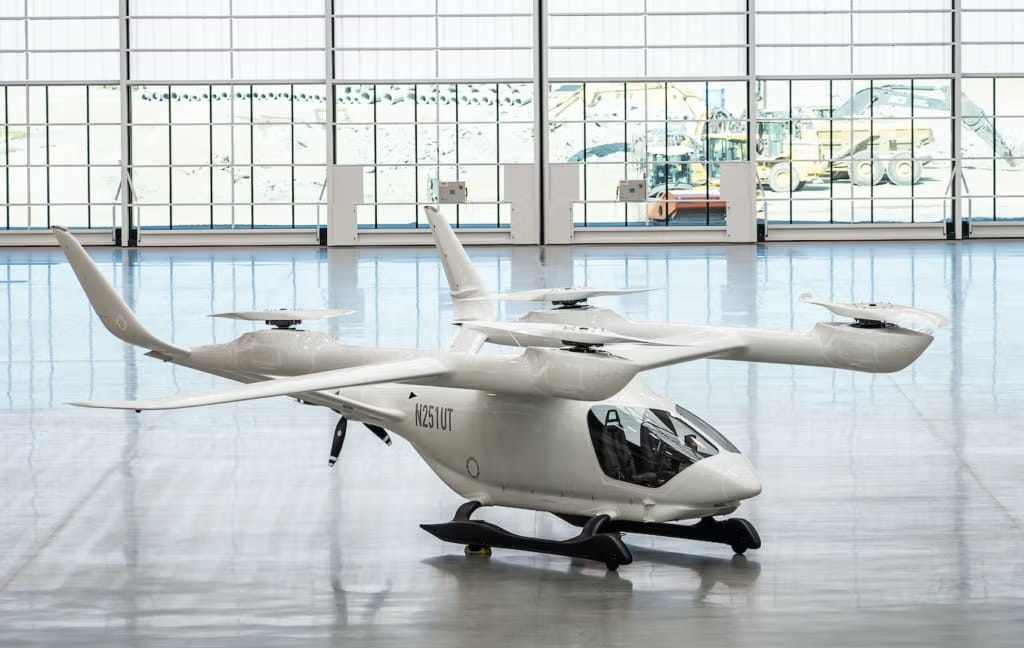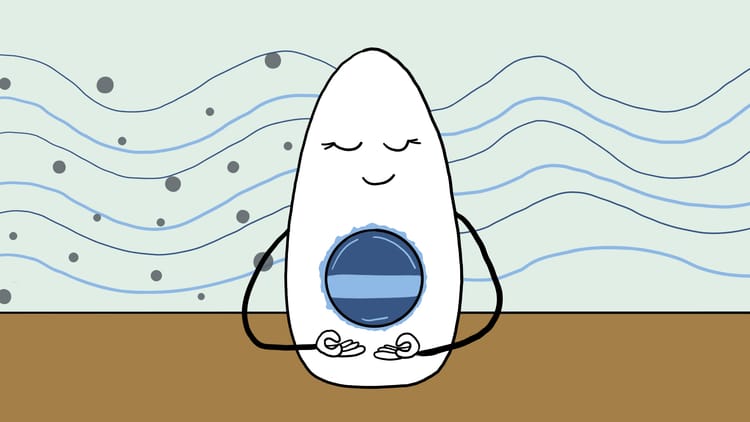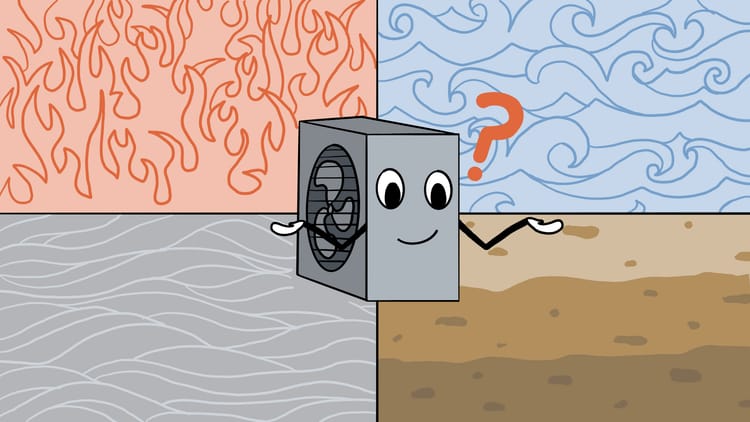It's a bird! It's a plane! It's... an eVTOL?

The end goal of the clean energy transition is to decarbonize anything and everything that emits planet-warming greenhouse gasses. That includes even the dirtiest, trickiest, most difficult emitters.
There's a climate term for this category: hard-to-abate sectors. Industries without easy or obvious ways to nullify their emissions.
Examples include the manufacturing of steel, cement, and chemicals, as well as long-distance transportation sectors such as shipping, heavy trucking, and—you guessed it—aviation.
Airplanes: the ultimate gas guzzlers
A plane flying from New York to Los Angeles will burn over 5,000 gallons of jet fuel on average.
The cost of fueling up for that flight? About $11,000. Talk about pain at the pump!
U.S. air carriers burn through ~17 billion gallons of jet fuel annually. Every combusted gallon emits ~21 pounds of CO2. (That's not, like, a figurative metric. If you sequestered all the carbon dioxide released from burning one gallon of jet fuel, it would literally weigh twenty-one pounds.)

Globally, aviation is responsible for ~3.5% of all human-driven planet warming.
Now, maybe 3.5% doesn't sound so bad. I get it. But every sliver of additional warming will result in more extreme and widespread climate change in the coming years.
So, what to do? We could stop flying, of course, or fly a lot less. But it's pretty convenient to fly places. (It also sucks and is super annoying.) I just don't see a worldwide boycott of air travel happening anytime soon.
But maybe we can fix the problem.
Today, scientists and engineers are working on two very different approaches to decarbonizing aviation emissions. Let's quickly go over the first one: Sustainable Aviation Fuels.
Sustainable Aviation Fuels (SAFs)
What if, instead of burning nasty jet fuel, we fueled up with something cleaner? Like, say, green hydrogen? Or biofuels made from plant and animal waste? Or corn ethanol?
Sounds good, in theory, but we run into two big issues:
- Manufacturing alternative fuels is expensive. SAFs cost 2-5x more than conventional jet fuel. In some extreme cases, they can cost up to 8-10x more. It's possible prices will come down with continued investment (and there's no shortage of that). However...
- Growing all the biomass we would need to produce enough green fuel to power all the world's planes would require enormous amounts of land. I quote: "If just one-quarter of the world’s aviation fuel likely needed in 2050 were to come from vegetable oil, its production would need to double globally.” In my opinion, there are few worse uses for fertile agricultural land than to grow a mono-crop whose only purpose is to become a somewhat cleaner version of gasoline.
- Relevant fact 1: today, 30 million acres of farmland in the U.S. are fully devoted to growing corn for the exclusive purpose of producing ethanol. That's about 40% of all corn grown in the U.S. None of it will be eaten by humans.
- Relevant fact 2: we'd only need about 50 million acres of land to power the entire planet with solar panels.

I'm not saying there's no place for Sustainable Aviation Fuels. Smart people are working on it. China just declared a massive investment in developing green hydrogen technologies. Still, I remain a much bigger fan of our second approach to decarbonizing aviation: all-electric aircraft.
Electric aircraft is the future—and the present
How far are we from a Jetsonian future of hopping into our personal electric aircraft and zipping over to the office in the sky (where we'll drink space coffee at our space desks and send space emails all day)?
It could be closer than you think.
Beta Technologies, headquartered in the cyberpunk capital of Burlington, Vermont, is a vertically integrated electric aircraft manufacturer that quietly IPO'd last week. They've raised over a billion bucks, selling nearly thirty million shares.
Beta makes electric aircraft. They also make their own charging infrastructure, motors, and just about everything else.
I specify that they make aircraft, rather than airplanes, because Beta makes two types of battery-powered fliers. The first is a (somewhat) more conventional-looking plane, the Alia CTOL:

But Beta's other model cannot be called an airplane. It's not a helicopter, either. It's something in-between: the Alia eVTOL, or electric Vertical Takeoff and Landing craft. It looks like this:

You'll notice the eVTOL has a lot in common structurally with their electric airplane. Beta uses the exact same wing, fuselage, and tail for both of their aircraft. The only difference is the eVTOL is outfitted with four drone-like rotors.
What's the point of the rotors on top of the eVTOL? I'll let Beta's CEO, Kyle Clark, explain. (This quote is from a June, 2024 episode of the Volts podcast.)
The way that it works is it takes off like a quadcopter drone, vertically, until it gets to about 20 feet in the air. Then an additional propeller at the back of the airplane starts pushing it forward through the air. As it moves forward, the air over the wing starts to create more and more lift, and about 30 seconds later, you stop the rotors on the top that were the quadcopter, and you point them like javelins into the wind (to reduce drag).
At that point, you've basically made a runway in the sky with those rotors. Then you start climbing like a regular airplane. Then you fly for a couple of hours, and when you're at your destination—be it a hospital, an urban center, or wherever you're going—you start to slow down. And before you stall the aircraft, aerodynamically stall it, you turn those top rotors back on, and then you start slowing down, decelerating and descending at the same time, much like a helicopter does, making a runway in the sky in the landing. But you don't touch the wheels to the ground until you're stopped about a couple feet off the ground.
And then you lower it down vertically to touch down. And the magic of that is that you have the flexibility of going directly point to point. Let's say you're going to a base, to a hospital, to a cargo center. Wherever you're going, you can go point-to-point. But because you stopped the rotors and you flew like an airplane, you get to go the distance of an airplane, which has about four times less drag than a helicopter on average. And so you go four times as long for every unit of energy, which is, of course, really important when you have a limited amount of energy, like in a battery.
So, you end up with an aircraft that takes off like a helicopter, turns into an airplane once it's in the sky for a massive energy savings, and then turns back into a helicopter when it's time to land.
Here's a hype video Beta just dropped that I'm including here because it's got some good info and shows the aircraft in flight:
A few more facts at a glance:
- In pictures, Beta's aircraft don't look too big, but they're about three times the size of a Cessna 172 Skyhawk
- Both of their aircraft can seat five passengers, plus a pilot. The military squeezes nine bodies in there. We'll talk more about the military's involvement next week.
- The longest recorded Beta airplane flight: 336 nautical miles on a single charge (a nautical mile is slightly longer than a standard or "statute" mile)
- What's it cost to buy one? Less than a helicopter, a little bit more than a plane. "A typical plane of this class would be $2.5 to $3 million. Our plane costs $3.5 to $4 million, and a helicopter will be $6 to $8 million."
- What's it cost to fly one? The electricity consumed during a flight is 40 times cheaper than the equivalent amount of jet fuel—and that doesn't account for a potential carbon tax, which is something that exists in more enlightened parts of the world.
Pretty, pretty cool.
There's tons more to talk about here—safety, competitors, where Beta's flying now, what's next, and why they're so keen to sign military contracts—but I'm out of space. You'll just have to come back next week.
Thanks for reading, and a special thanks to Kyle Hodgson from the SkyZero.io newsletter for his help with this piece.





Member discussion